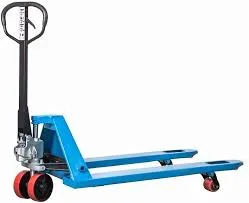


Designing an Efficient Chain Hoist Key Features and Considerations
Chain hoists are essential tools in various industrial and construction settings, facilitating the lifting and lowering of heavy materials with ease. The design of a chain hoist is critical to ensure efficiency, safety, and reliability in operations. This article explores the key features and considerations necessary for an effective chain hoist design.
One of the fundamental components of a chain hoist is its lifting mechanism. Typically, chain hoists operate using a gear system that reduces the amount of effort needed to lift heavy loads. This system often involves a combination of a hand chain and a load chain. The hand chain allows the operator to manually lift or lower the load, while the load chain connects the hoist to the item being lifted. In designing a chain hoist, it is essential to assess the gear ratio to ensure optimal lifting power while minimizing effort.
Material selection is another crucial aspect of chain hoist design. The materials used in the construction of both the hoist and its components must be durable and capable of withstanding the stresses encountered during lifting operations. Steel and high-strength alloys are commonly used due to their robustness and resistance to deformation. Furthermore, the finish on the components can significantly affect their longevity; for example, using corrosion-resistant coatings can extend the life of the hoist in harsh environments.

Safety features are paramount in the design of a chain hoist. Incorporating elements such as overload protection systems helps prevent accidents that could arise from lifting weights beyond the hoist's capacity. This can be achieved through mechanical limits or electronic sensors that automatically halt operation if excessive weight is detected. Additionally, proper braking systems are essential to ensure that loads can be held securely in place without slipping or dropping, which could lead to catastrophic failures.
Ergonomics also play a significant role in the design process. A well-designed chain hoist should enable operators to handle loads comfortably and efficiently, thereby reducing fatigue and the risk of injury. This could involve the placement of the hand chain, adjustments in the height of the hoist, or the addition of features such as trolleys for easier movement along a fixed rail.
Regular maintenance and ease of servicing should also be taken into account during the design phase. A chain hoist that is difficult to service can lead to increased downtime and maintenance costs. Designing for accessibility allows operators to conduct routine inspections and repairs swiftly, ensuring the hoist remains in optimal working condition.
In conclusion, the design of a chain hoist involves multiple considerations, from the mechanics of lifting to material selection, safety measures, and user ergonomics. A well-designed chain hoist not only enhances operational efficiency but also prioritizes the safety of users and the longevity of the equipment. As industries continue to evolve, the continuous improvement of chain hoist designs will be vital in meeting the changing demands of lifting operations.



